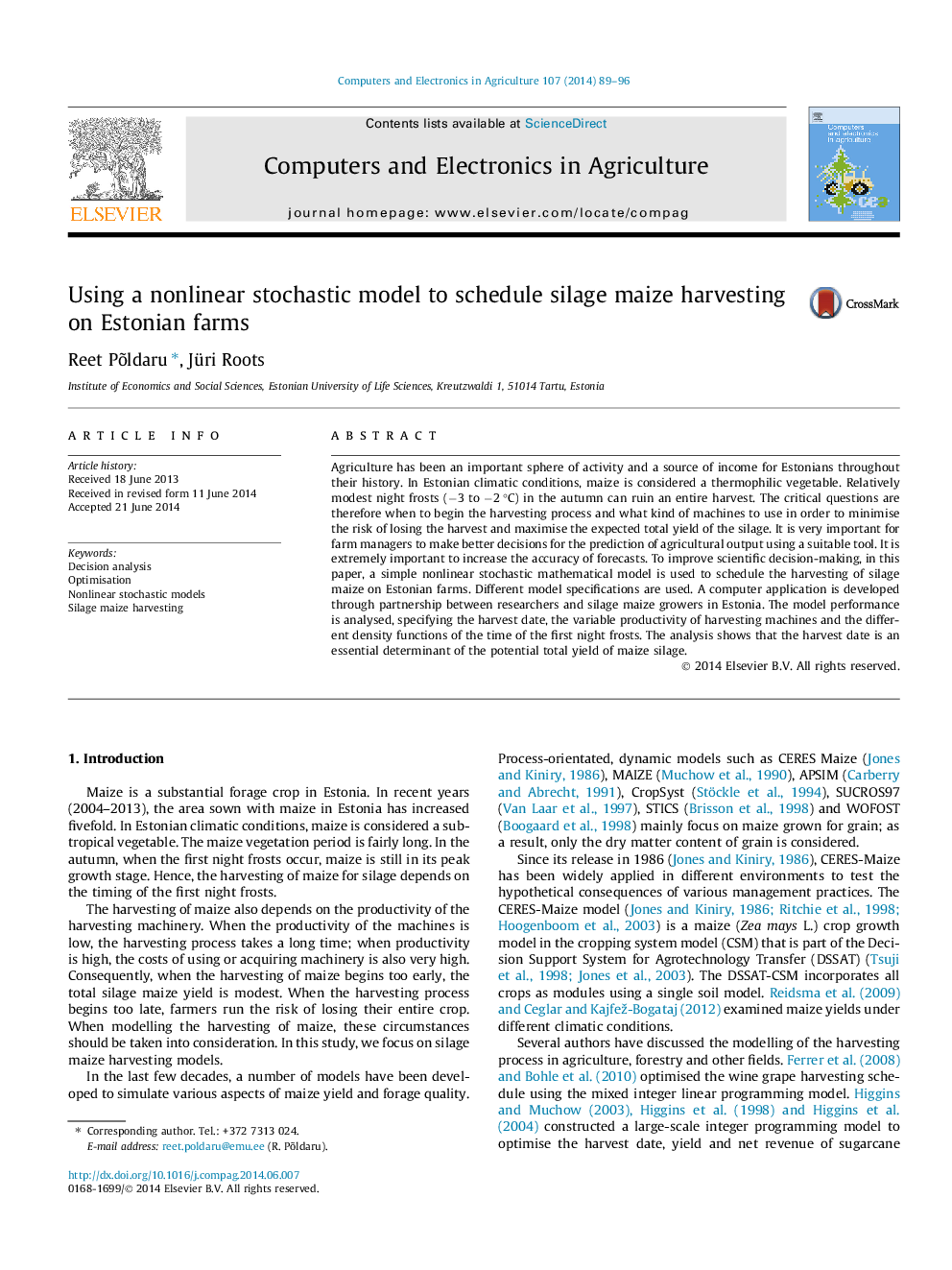| Article ID | Journal | Published Year | Pages | File Type |
|---|---|---|---|---|
| 84325 | Computers and Electronics in Agriculture | 2014 | 8 Pages |
•A nonlinear stochastic model is used to schedule the harvesting of silage maize.•The harvest date is an essential determinant of the potential total yield of the maize silage.•A random variable type has a very small impact on the results of optimisation.•The productivity of machinery has an important impact on the process of harvesting.•The harvest date is an important source of uncertainty.
Agriculture has been an important sphere of activity and a source of income for Estonians throughout their history. In Estonian climatic conditions, maize is considered a thermophilic vegetable. Relatively modest night frosts (−3 to −2 °C) in the autumn can ruin an entire harvest. The critical questions are therefore when to begin the harvesting process and what kind of machines to use in order to minimise the risk of losing the harvest and maximise the expected total yield of the silage. It is very important for farm managers to make better decisions for the prediction of agricultural output using a suitable tool. It is extremely important to increase the accuracy of forecasts. To improve scientific decision-making, in this paper, a simple nonlinear stochastic mathematical model is used to schedule the harvesting of silage maize on Estonian farms. Different model specifications are used. A computer application is developed through partnership between researchers and silage maize growers in Estonia. The model performance is analysed, specifying the harvest date, the variable productivity of harvesting machines and the different density functions of the time of the first night frosts. The analysis shows that the harvest date is an essential determinant of the potential total yield of maize silage.
